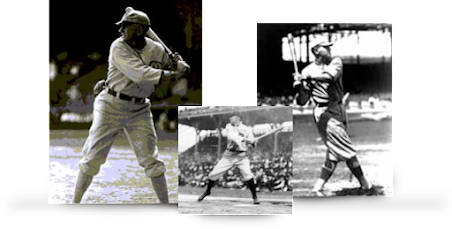Major League Baseball keeps running totals of all-time home runs by the team, including teams no longer active (before 1900) as well as by individual players. Gary Sheffield hit the 250,000th home run in MLB history with a grand slam on September 8, 2008. Sheffield had hit MLB's 249,999th home run against Gio González in his previous at-bat.
The all-time, verified professional baseball record for career home runs for one player, excluding the U.S. Negro leagues during the era of segregation, is held by Sadaharu Oh. Oh spent his entire career playing for the Yomiuri Giants in Japan's Nippon Professional Baseball, later managing the Giants, the Fukuoka SoftBank Hawks and the 2006 World Baseball Classic Japanese team. Oh holds the all-time home run world record, having hit 868 home runs in his career.
In Major League Baseball, the career record is 762, held by Barry Bonds, who broke Hank Aaron's record on August 7, 2007, when he hit his 756th home run at AT&T Park off pitcher Mike Bacsik. Only eight other major league players have hit as many as 600: Hank Aaron (755), Babe Ruth (714), Albert Pujols (703), Alex Rodriguez (696), Willie Mays (660), Ken Griffey Jr. (630), Jim Thome (612), and Sammy Sosa (609). Miguel Cabrera holds the record for currently active MLB players with 507.
The single season record is 73, set by Barry Bonds in 2001. Other notable single season records were achieved by Babe Ruth who hit 60 in 1927, Roger Maris, with 61 home runs in 1961, Aaron Judge, with 62 home runs in 2022, and Sammy Sosa and Mark McGwire, who hit 66 and 70 respectively, in 1998.
Negro league slugger Josh Gibson's Baseball Hall of Fame plaque says he hit "almost 800" home runs in his career. The Guinness Book of World Records lists Gibson's lifetime home run total at 800. Ken Burns' award-winning series, Baseball, states that his actual total may have been as high as 950. Gibson's true total is not known, in part due to inconsistent record keeping in the Negro leagues. The 1993 edition of the MacMillan Baseball Encyclopedia attempted to compile a set of Negro league records, and subsequent work has expanded on that effort. Those records demonstrate that Gibson and Ruth were of comparable power. The 1993 book had Gibson hitting 146 home runs in the 501 "official" Negro league games they were able to account for in his 17-year career, about 1 homer every 3.4 games. Babe Ruth, in 22 seasons (several of them in the dead-ball era), hit 714 in 2503 games, or 1 homer every 3.5 games. The large gap in the numbers for Gibson reflect the fact that Negro league clubs played relatively far fewer league games and many more "barnstorming" or exhibition games during the course of a season, than did the major league clubs of that era.
Other legendary home run hitters include Jimmie Foxx, Mel Ott, Ted Williams, Mickey Mantle (who on September 10, 1960, mythically hit "the longest home run ever" at an estimated distance of 643 feet (196 m), although this was measured after the ball stopped rolling[30]), Reggie Jackson, Harmon Killebrew, Ernie Banks, Mike Schmidt, Dave Kingman, Sammy Sosa (who hit 60 or more home runs in a season three times), Ken Griffey Jr. and Eddie Mathews. In 1987, Joey Meyer of the minor league Denver Zephyrs hit the longest verifiable home run in professional baseball history. The home run was measured at a distance of 582 feet (177 m) and was hit inside Denver's Mile High Stadium. On May 6, 1964, Chicago White Sox outfielder Dave Nicholson hit a home run officially measured at 573 feet that either bounced atop the left-field roof of Comiskey Park or entirely cleared it. Major League Baseball's longest verifiable home run distance is about 575 feet (175 m), by Babe Ruth, to straightaway center field at Tiger Stadium (then called Navin Field and before the double-deck), which landed nearly across the intersection of Trumbull and Cherry.
The location of where Hank Aaron's record 755th home run landed has been monumented in Milwaukee. The spot sits outside American Family Field, where the Milwaukee Brewers currently play. Similarly, the point where Aaron's 715th homer landed, upon breaking Ruth's career record in 1974, is marked in the Turner Field parking lot. A red-painted seat in Fenway Park marks the landing place of the 502-ft home run Ted Williams hit in 1946, the longest measured homer in Fenway's history; a red stadium seat mounted on the wall of the Mall of America in Bloomington, Minnesota, marks the landing spot of Harmon Killebrew's record 520-foot shot in old Metropolitan Stadium.
May 2019 saw 1,135 MLB home runs, the highest ever number of home runs in a single month in Major League Baseball history. During this month, 44.5% of all runs came during a homer, breaking the previous record of 42.3%.
In postseason play, the most home runs hit by a player for a career is Manny Ramirez, who hit 29. Jose Altuve (23), Bernie Williams (22), and Derek Jeter (20) are the only other players to hit twenty postseason home runs. Rounding out the top ten as of the end of the 2021 season is Albert Pujols (19), George Springer (19), Carlos Correa (18), Reggie Jackson (18), Mickey Mantle (18, all in the World Series), and Nelson Cruz (18). As for most home runs in one postseason, Randy Arozarena holds the record with ten, done in the 2020 postseason.
Read more, here.
(707) 290-9731
777-D Elmira Road
Vacaville, CA 95687
Website








